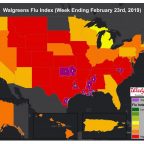Carbon Monoxide Awareness – Protect Home, Family
Carbon monoxide (CO) is known as the silent killer because it is colorless, odorless, tasteless and cannot be detected by humans unless alarms or detectors are used. January is when CO accidents peak due to the heavier use of furnaces and gas heaters as a result of cold weather. It is recommended to ensure all detectors and alarms are in working order and everyone in the home is aware of the dangers of CO.
Tips to help avoid the dangers of carbon monoxide:
- Install and check CO detectors – Each level of your home and sleeping areas should have a carbon monoxide detector. Periodically check the batteries and replace as needed.
- Never use a gas stove for heat – Although a gas stove can generate a lot of heat, using it as a heat source for the home is extremely dangerous. The product of burning gas can lead to a build-up of carbon monoxide over extended periods of time. Avoid this practice in your home.
- Keep CO producing equipment outside – Do not use equipment indoors that is intended for outdoor use. Charcoal or gas grills, generators, portable furnaces or other charcoal or gas burning devices should never be used indoors. This includes basements and garages. Also, it is never a good idea to use them close to doors, windows or vents where the exhaust could leach into the home.
- Keep chimneys clear – If you suspect you may have a blockage of your chimney, have it checked for animal nests, leaves and residue to ensure proper venting. It is a good idea to have all fireplaces cleaned and inspected annually.
- Warm up vehicles outside – It’s never a good idea to start and warm up a vehicle inside the garage – it can be very dangerous. Even if the garage door is open, it is possible for carbon monoxide produced by the exhaust to get inside the home. Best practice – after starting up the vehicle, move it outside while it warms up to ensure that toxic exhaust fumes properly vent.
- Tune-up the furnace – Every homeowner should schedule an annual tune-up for the furnace. Trained service technicians look for and identify potential blockages that could prevent CO from properly venting. They also check to make sure that heat exchangers are in good working order and not cracked. They will replace filters and lubricate the motor and other moving parts in the system to ensure the best performance.






